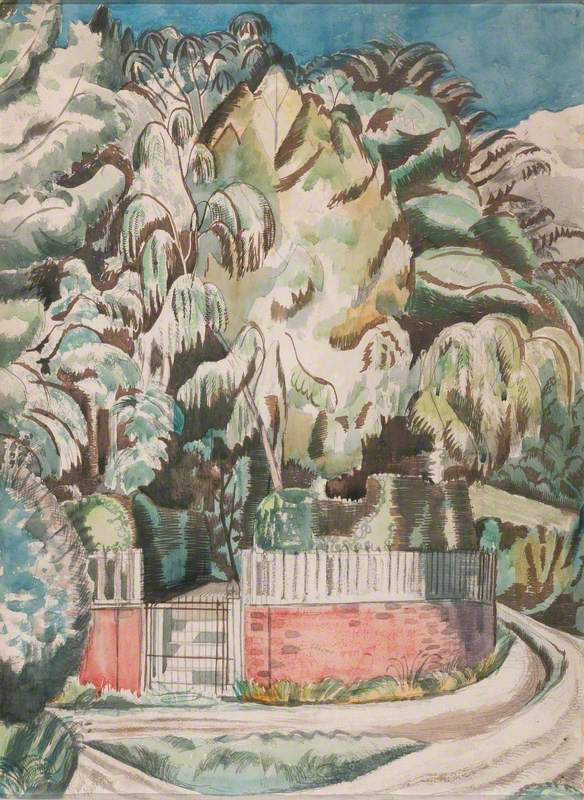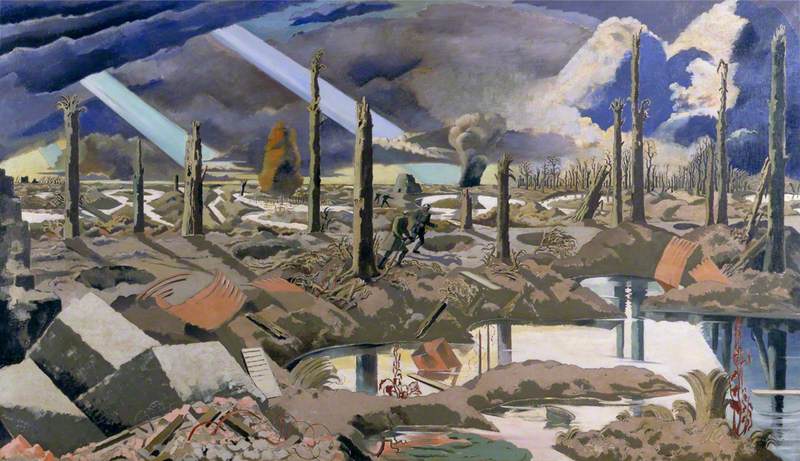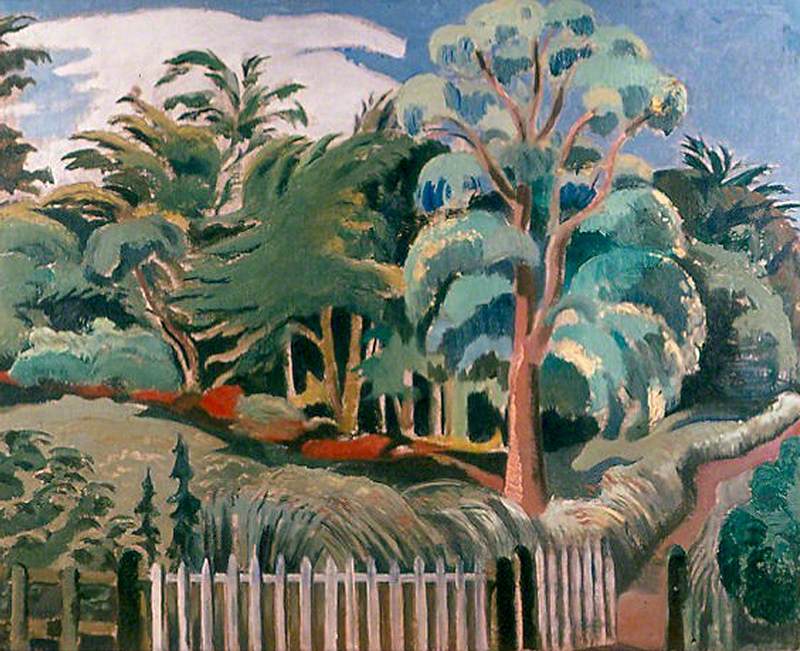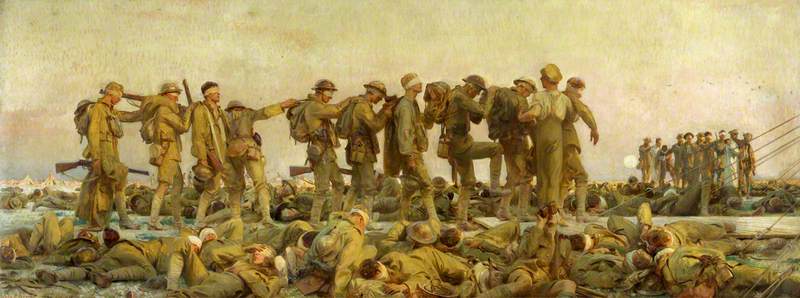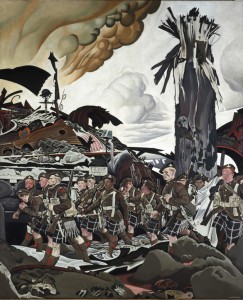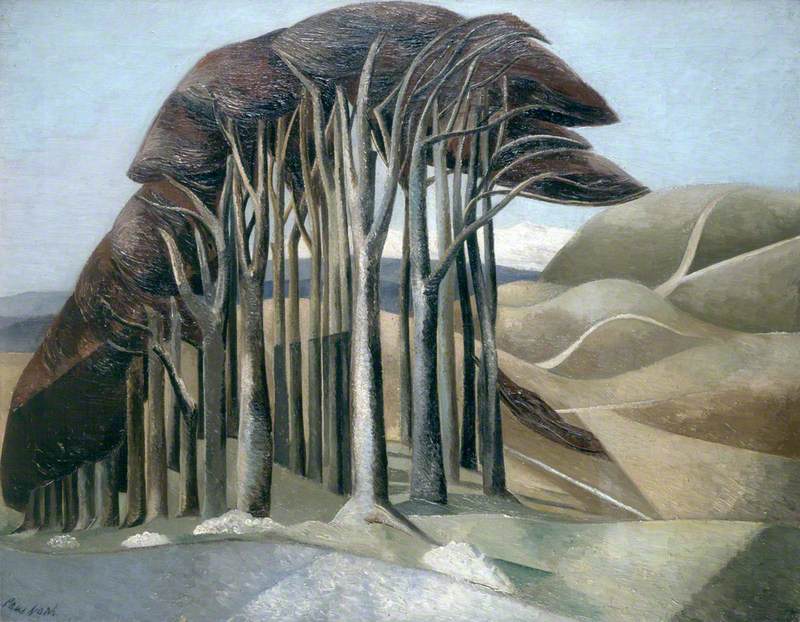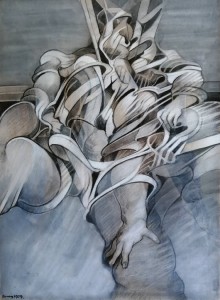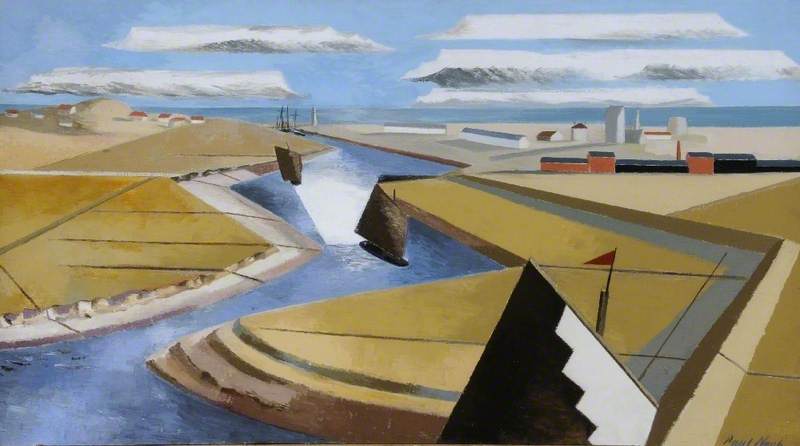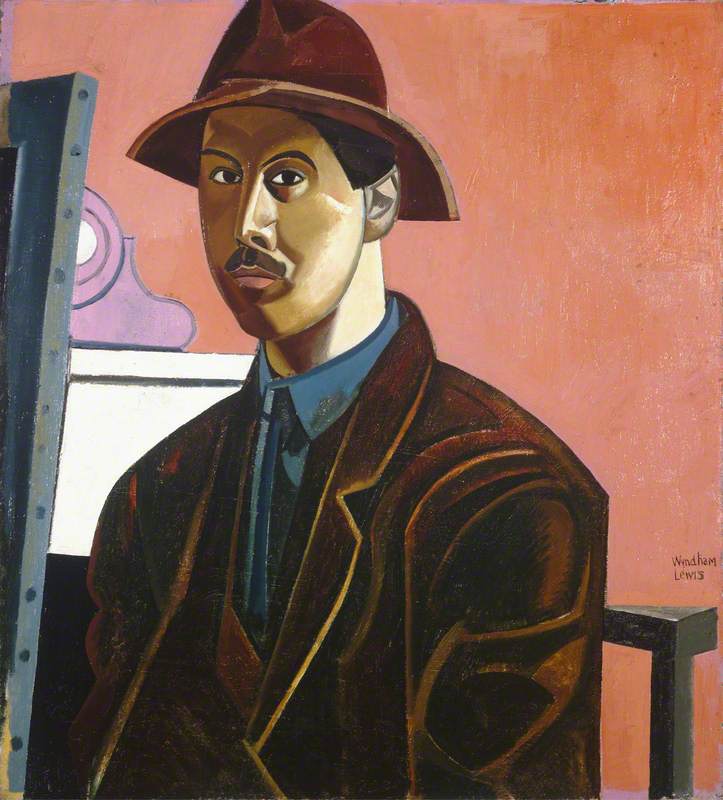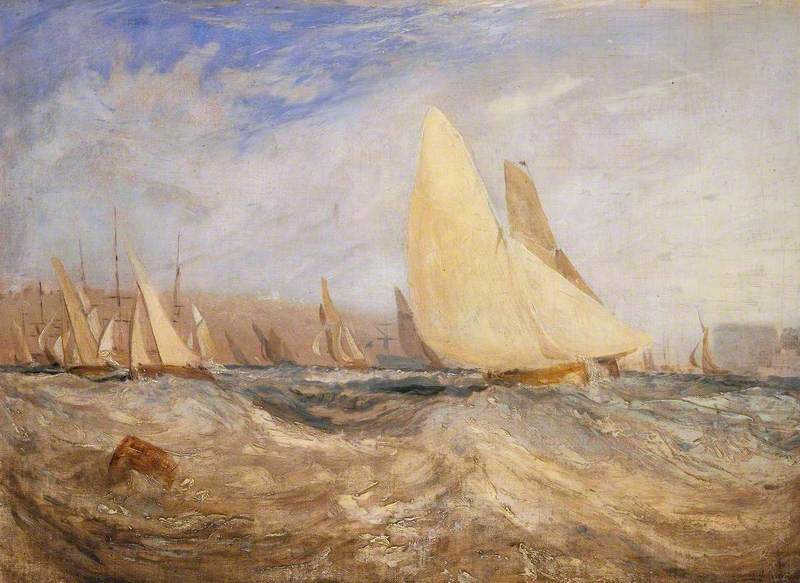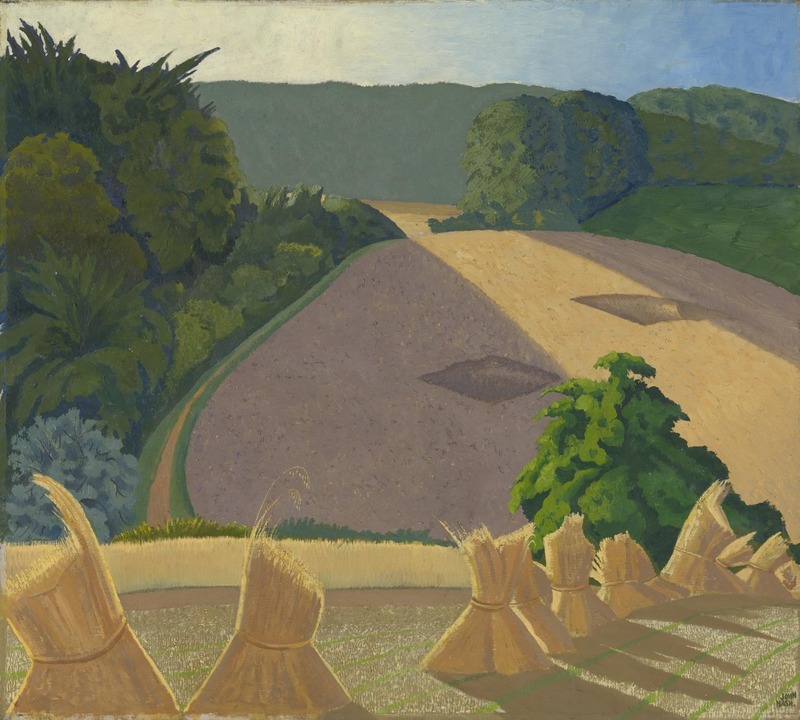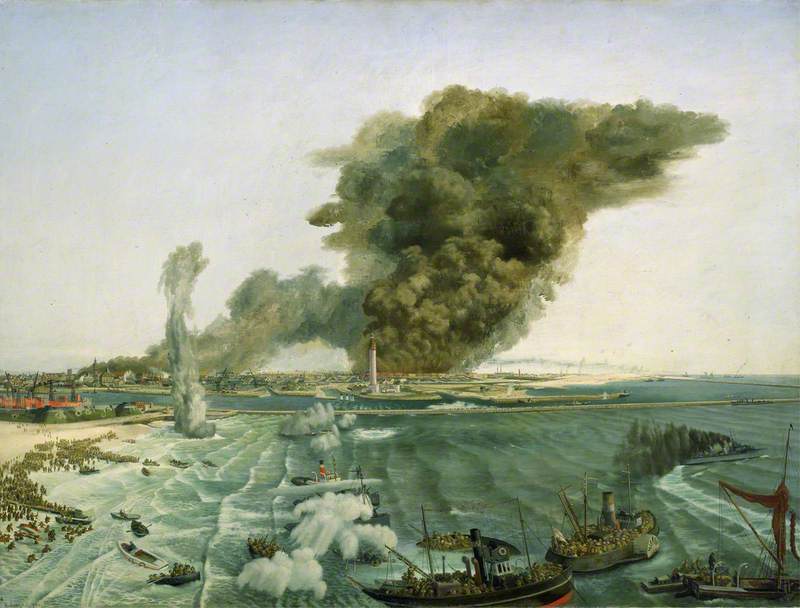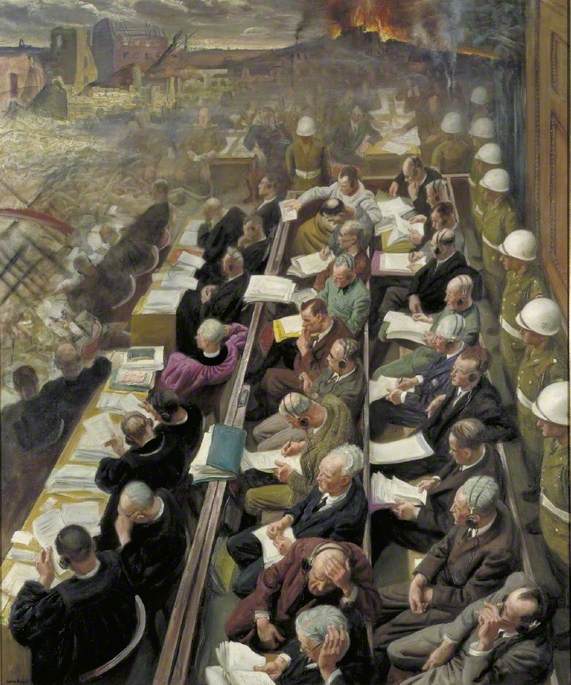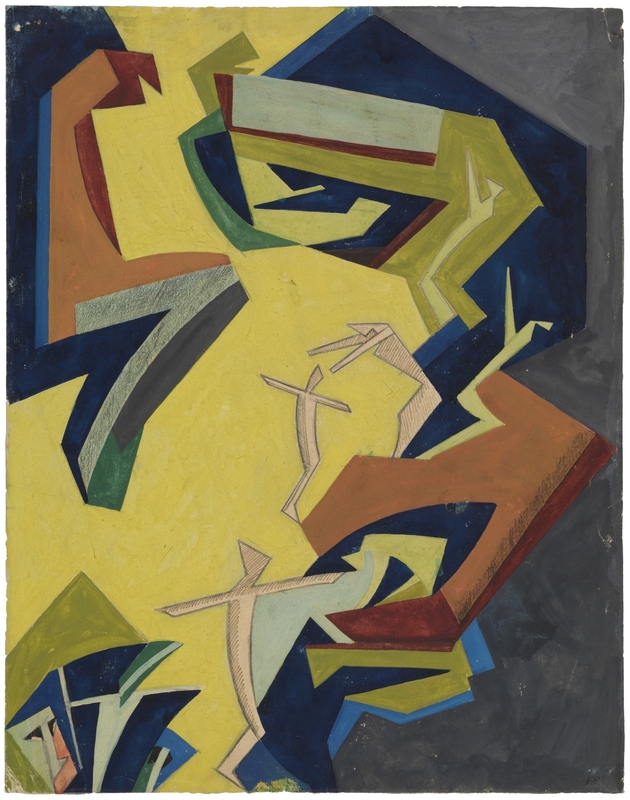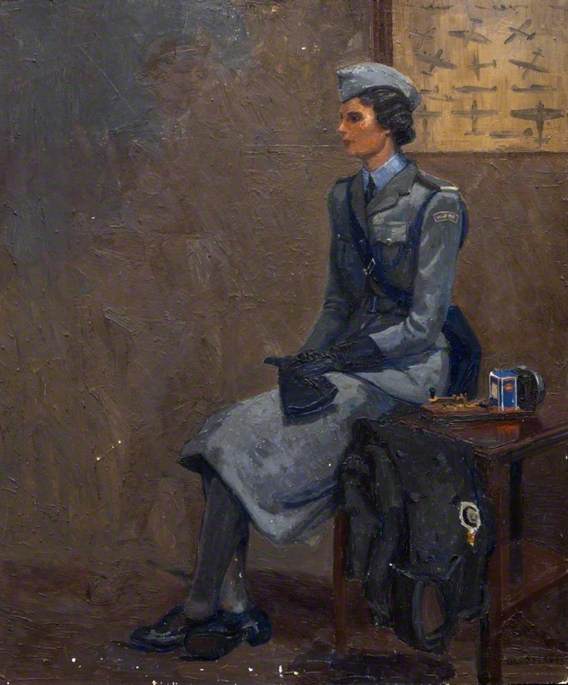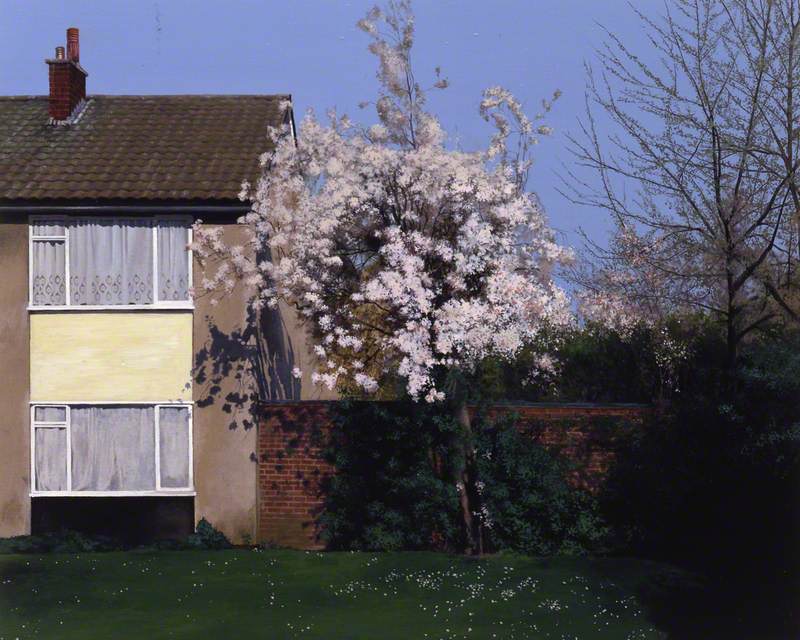The Jerwood Collection, which is on permanent display at the Jerwood Gallery in Hastings, grows with new acquisitions and donations each year. One of the works recently purchased is a vibrant watercolour, The Corner by Paul Nash (1889–1946).
Painted in 1919 The Corner marks a critical time in Nash’s career. At the start of the
This impressive oil depicts the devastation wrecked on the Belgian landscape during the Battle of Passchendaele in the autumn of 1917: two soldiers are shown stumbling through a place which has become unrecognisable; trees are reduced to blasted stumps; all vegetation has withered; and large concrete blocks, barbed wire and corrugated iron lies strewn in the foreground while the sky has become blackened with smoke and clouds. After completing The Menin Road Nash wrote to his friend, the English poet, Gordon Bottomley that it was ‘by far the best thing I have yet done’,
In the immediate post-war
Nash has used a similar compositional device in The Corner to his oil painting of the same year, The Edge of the Wood (Reading Museum & Town Hall). Both works take different species of trees in full foliage as their subject matter and depict them enclosed within man-made structures of fences and roads. The calmness and serenity of the trees depicted in The Corner and The Edge of the Wood are in complete contrast to the blasted stumps which appear in The Menin Road. In the later
The Corner was first exhibited in November 1919 in a small exhibition of Nash’s recent work at his Fitzroy Street studio and it was either bought or given to John Nash. Paul Nash wrote to Bottomley: ‘my new drawings are dearer to me than almost any work I have yet done. I cannot but help feeling now, at
The Corner will be on display at the Jerwood Gallery, Hastings, in the upstairs collection rooms (28th January until 21st May 2017).
Lara Wardle,
